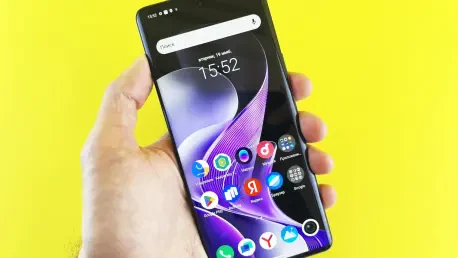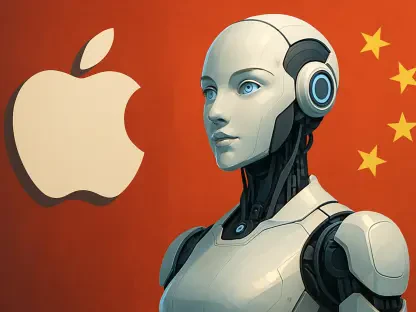In the ever-evolving world of mobile technology, the competition for supremacy in user interface design is as intense as ever, with every new operating system release marking a significant leap in innovation and functionality. As 2025 progresses, Android 16 QPR1 and Xiaomi’s HyperOS 2.3 lead the charge, each embodying state-of-the-art advancements while maintaining distinct design philosophies that cater to diverse user preferences. This period sees Android 16 QPR1, a product of Google’s relentless push for increased customizability, embracing the Material You design language, which allows users a considerable degree of personalization. Meanwhile, HyperOS 2.3 stands as Xiaomi’s latest attempt to refine and perfect an elegantly styled iOS-inspired interface that boasts both visual sophistication and simplicity. These iterations bring groundbreaking features that are hotly debated by both enthusiasts and experts, revealing that the quest for the ultimate smartphone experience is characteristically different for individual users.
Notification Management and Control Centers
Analyzing the capabilities of each operating system, one can easily see that notification management serves as a foundational aspect of the user interface, reflecting each system’s design priorities. Android 16 QPR1 distinguishes itself with superior notification handling, utilizing Google’s extensive application ecosystem to enhance both interaction capabilities and the aesthetic aspect of notifications through innovative blur effects. Google’s intentional focus on user interaction is evident, as the system streamlines the way notifications are presented and managed, granting users more control and flexibility. On the other hand, Xiaomi’s HyperOS 2.3, while generally effective, encounters occasional challenges with notifications, particularly from third-party apps that struggle to achieve seamless integration. Despite these issues, HyperOS retains a well-structured notification system that prioritizes clarity and accessibility, ensuring important alerts are never missed.
The difference between the two systems becomes especially apparent when examining their respective control centers. HyperOS 2.3 takes inspiration from iOS in providing a visually structured approach that prioritizes elegance alongside usability, making it particularly appealing to users who appreciate a neatly organized control panel. The aesthetic choices emphasize clarity, with a minimalistic presentation fostering ease of navigation. Conversely, Android 16’s control center features functional, space-occupying tiles that focus heavily on providing customization options and flexibility. Though this approach may appear less streamlined at first glance, it caters to users who demand extensive control over the configuration and utility of their device. The resizable nature of Android 16’s control tiles caters well to those seeking an adaptable and multifunctional interface setting.
Personalization Capabilities
In any comparison of mobile operating systems, personalization capabilities play a crucial role, as they significantly impact user satisfaction and engagement. HyperOS 2.3 excels in this area by providing an enriched lock screen customization framework, offering users a unique home screen experience characterized by aesthetic variety and seamless interaction. Through these elements, HyperOS strives to deliver a setup where users can express their individuality while enjoying the convenience of intuitive navigation. This particular focus on aesthetics and fluidity of use reflects Xiaomi’s ongoing dedication to appeasing fans of sleek design and minimalist beauty.
Meanwhile, Android 16 QPR1 preserves its identity as a powerhouse of functional design. It remains faithful to the standard Android interface, focusing on pragmatic elements that provide straightforward access to applications and services. The Material You design language drives this iteration, providing users with refined options for deep customizations, allowing them to tailor their devices to align with personal preferences and usage habits. Android’s emphasis on visual adaptability and thematic consistency continues to appeal to users who value both functionality and aesthetic harmony, supporting a comprehensive degree of device personalization.
Another distinct aspect to consider is the timeline for updates and availability, which greatly influences user choices. With Android 16 QPR1 already accessible in beta form for Pixel devices, its real-world applicability is tested robustly, giving users a head start in experiencing the utility enhancements it brings. This availability reflects Google’s strategy of offering timely updates to its user base. On the contrary, Xiaomi users are eagerly anticipating the formal unveiling of HyperOS 2.3 in June 2025, underscoring the excitement surrounding Xiaomi’s progression and its potential to surprise users with implemented innovations.
Diverse User Preferences
In examining these two operating systems and the attributes that define them, it becomes evident that both Android 16 QPR1 and HyperOS 2.3 cater to different camps of users with distinct expectations and priorities. Android 16 thrives as a choice for those who prioritize high levels of customization, allowing individuals to transform their device environment according to specific tastes and needs. The pragmatic design approach of Android is supported by its flexible ecosystem, encouraging users to explore endless possibilities in configuration and interface design.
In contrast, HyperOS 2.3 appeals to those drawn to a more stylized, elegantly crafted user experience that provides simplicity without compromising sophistication. The interface’s fluid animations and minimalist design principles resonate with individuals who appreciate both visual appeal and seamless navigation. This alignment with modern aesthetics and refinement showcases Xiaomi’s commitment to producing a product that not only meets functional demands but also exceeds visual expectations.
As both systems continue to develop and resonate differently within the mobile technology landscape, neither Android 16 nor HyperOS 2.3 emerges as a clear conqueror. Instead, they embody the diversity intrinsic to technological advancement, offering unique approaches to mobile usability that mirror the varied demands of modern consumers. While Android champions customizability and robust application integration, HyperOS stands firm in its mission to distill elegance and functional design into a singular cohesive experience, guiding users along distinct paths to smartphone satisfaction.
Looking Ahead
In the rapidly advancing realm of mobile technology, the battle for dominance in user interface design remains fierce, with each new OS release signifying substantial strides in both innovation and functionality. As we move through 2025, Android 16 QPR1 and Xiaomi’s HyperOS 2.3 are at the forefront of this evolution. These operating systems exemplify the latest advancements, maintaining distinct design philosophies tailored to varied user preferences. Android 16 QPR1, the result of Google’s ongoing commitment to enhanced customizability, adopts the Material You design language, offering users extensive opportunities for personalization. On the other hand, HyperOS 2.3 represents Xiaomi’s newest effort to refine an iOS-inspired interface that achieves a balance of visual elegance and simplicity. Both OS versions introduce groundbreaking features that generate lively discussions among enthusiasts and experts alike, underscoring that the pursuit of the optimal smartphone experience is uniquely tailored to individual user needs and desires.









